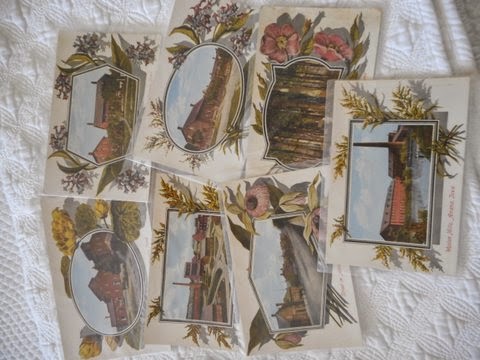Tuesday, September 16, 2014
Amana Postcards
As tourism increased in the Amana Colonies after 1932, there were several ways to advertise and correspond in and out of Amana. Postcards were printed and common across the USA from about 1900-1960's and used to send cheap greetings for any reason- the text message and social media of that era that started in England in the late 1800's. In the early 1900's salesmen who were photographers themselves, traveled the nation's Byways and sold cards in bulk to stores of their town images. The cards helped propel tourism. They came in many styles (linen paper, real photo, silk, artistic signed, chrome), some colored , some in black and white, others sepia brown. There were plain borders, floral borders and more. Some were printed in Germany while others were printed here in the United States. Special, real photos were made into postcards by mail as well. They showed scenes of all famous Amana landmarks, landscapes, people, architecture, disasters, and animals. Simple scenes were postcard worthy in Amana. They showed how Amana was changing and developing. Below is the Amana print works and men hauling ice with the ice wagon and cutter. Hard to find, I find these to be beautiful pieces of art, records of history, and very collectible. Podunk photo.
Subscribe to:
Comments (Atom)




